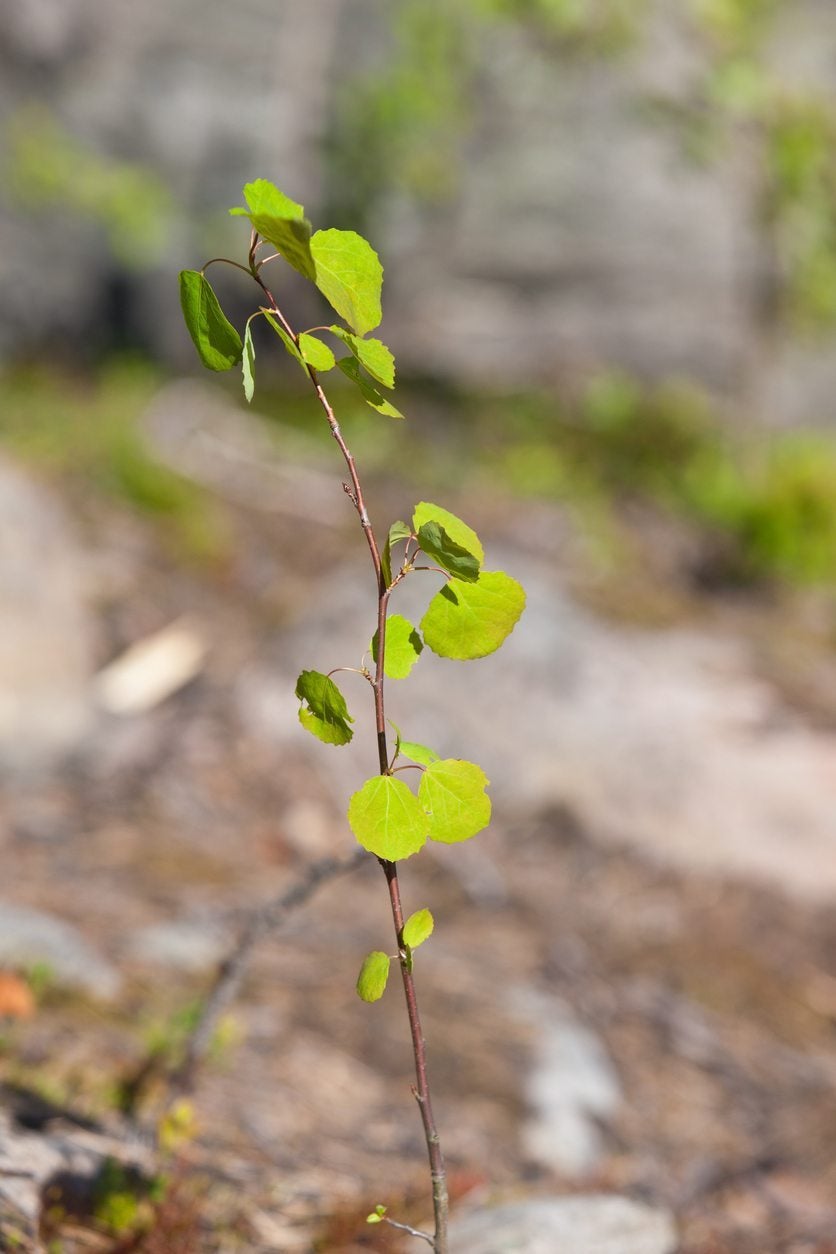Aspen Seedling Transplant Info – When To Plant Aspen Seedlings


Aspen trees (Populus tremuloides) are a graceful and striking addition to your backyard with their pale bark and “quaking” leaves. Planting a young aspen is inexpensive and easy if you transplant root suckers to propagate the trees, but you can also buy young aspen grown from seed. If you are interested in aspens, read on for information about when to plant aspen saplings and how to plant aspen saplings.
Planting a Young Aspen
The easiest method of starting young aspen trees is vegetative propagation by means of root cuttings. Aspens do all the work for you, producing young plants from their roots. To “harvest” these saplings, you cut off the root suckers, dig them out, and transplant them. Aspens also propagate with seeds, although this is a much more difficult process. If you are able to grow seedlings or buy some, aspen seedling transplants will be virtually the same as root sucker transplants.
When to Plant Aspen Saplings
If you are planting a young aspen, you’ll need to know when to plant aspen saplings. The best time is spring, after the chance of frost is passed. If you live in a warm area in a hardiness zone higher than zone 7, you should transplant aspens in early spring. An aspen seedling transplant in spring gives the young aspen ample time to establish a healthy root system. It will need a working root system to make it through the hot summer months.
How to Plant Aspen Saplings
First, pick a good site for your young tree. Keep it well away from your home’s foundation, sewer/water pipes, and 10 feet (3 m.) away from other trees. When you are planting a young aspen, you’ll want to position the tree in a spot with sun, either direct sun or partial sun. Remove weeds and grasses in a 3 foot (1 m.) area around the tree. Break up the soil down to 15 inches (38 cm.) below the planting site. Amend the soil with organic compost. Work sand into the mix as well if drainage is poor. Dig a hole in the worked soil for the seedling's or sapling’s root ball. Position the young aspen in the hole and fill in around it with extruded soil. Water it well and firm the soil around it. You’ll need to keep watering the young aspen for the entire first growing season. As the tree matures, you’ll have to irrigate during dry spells, particularly in hot weather.
Sign up for the Gardening Know How newsletter today and receive a free copy of our e-book "How to Grow Delicious Tomatoes".

Teo Spengler is a master gardener and a docent at the San Francisco Botanical Garden, where she hosts public tours. She has studied horticulture and written about nature, trees, plants, and gardening for more than two decades, following a career as an attorney and legal writer. Her extended family includes some 30 houseplants and hundreds of outdoor plants, including 250 trees, which are her main passion. Spengler currently splits her life between San Francisco and the French Basque Country, though she was raised in Alaska, giving her experience of gardening in a range of climates.